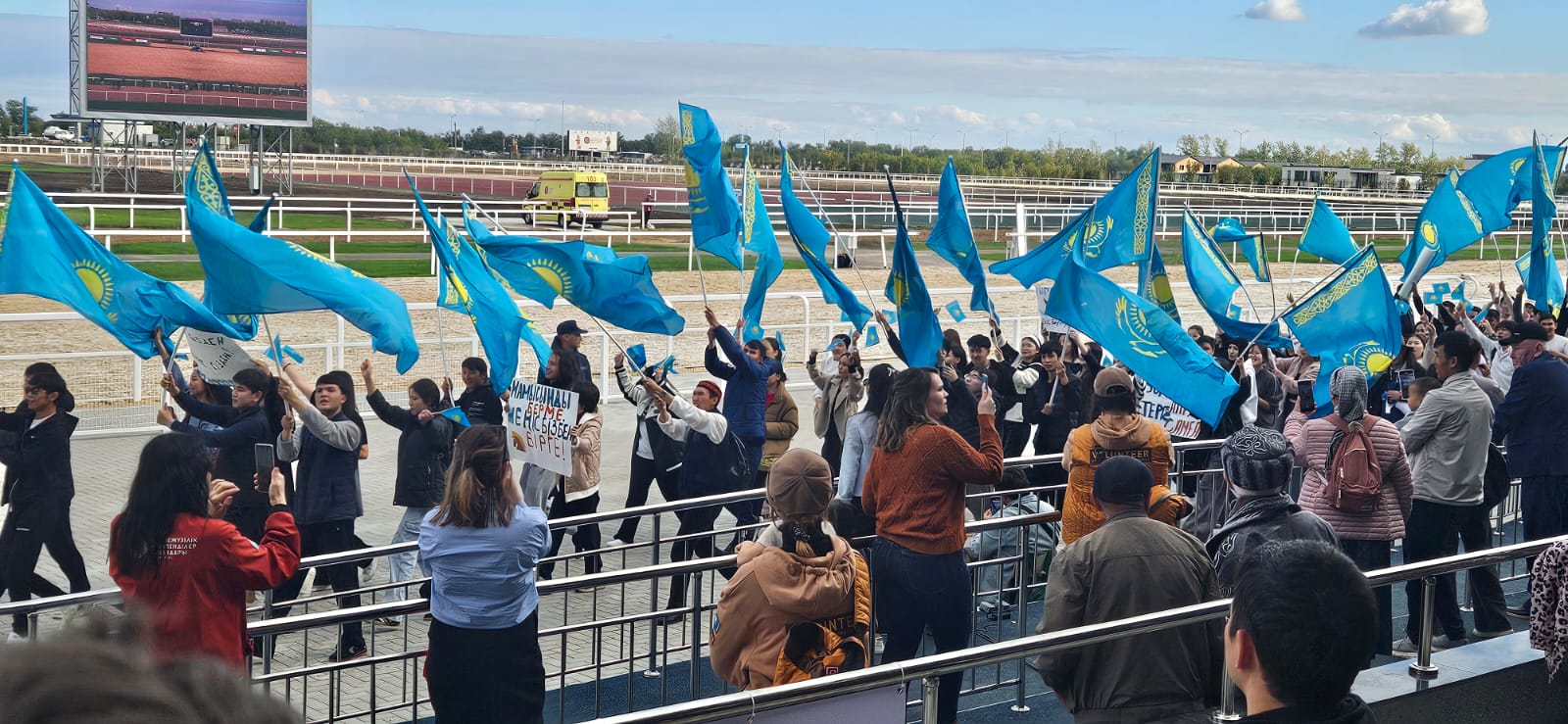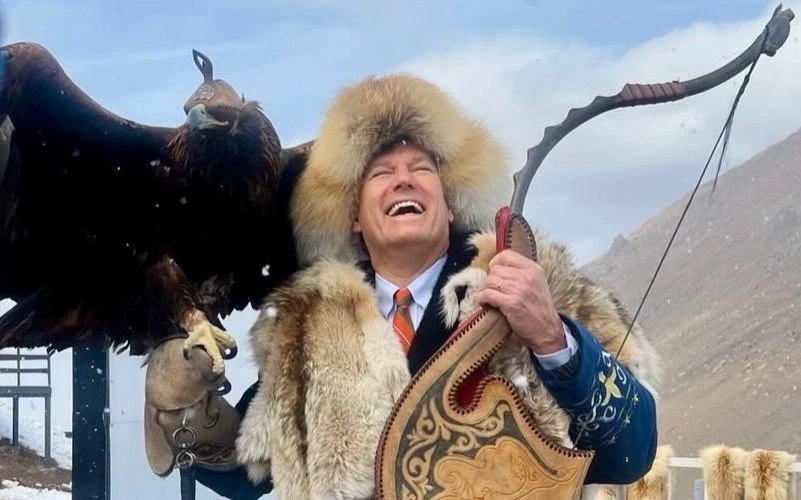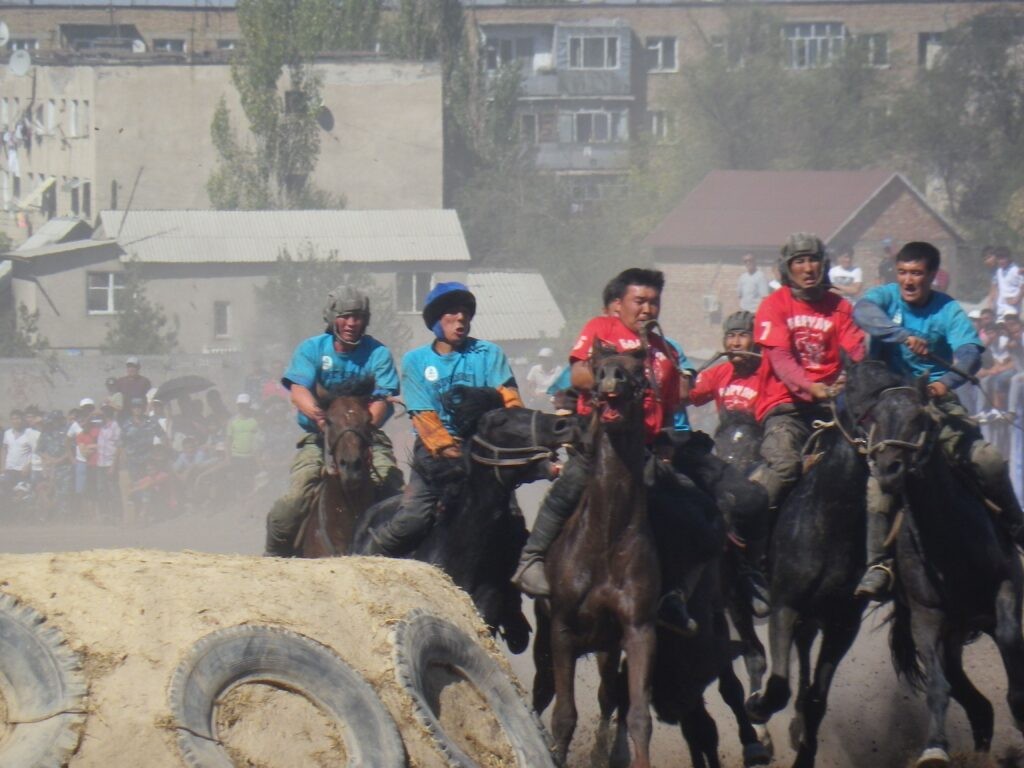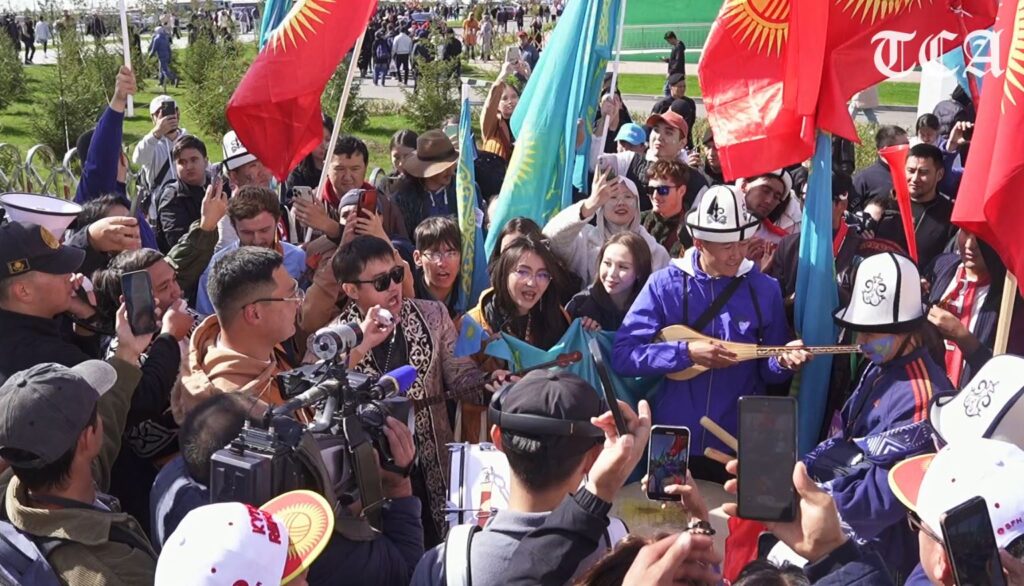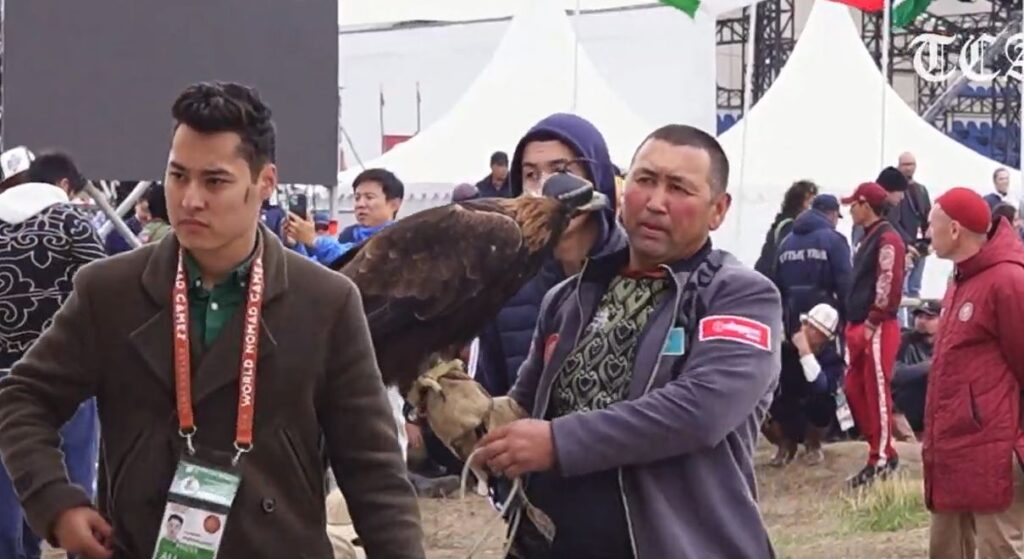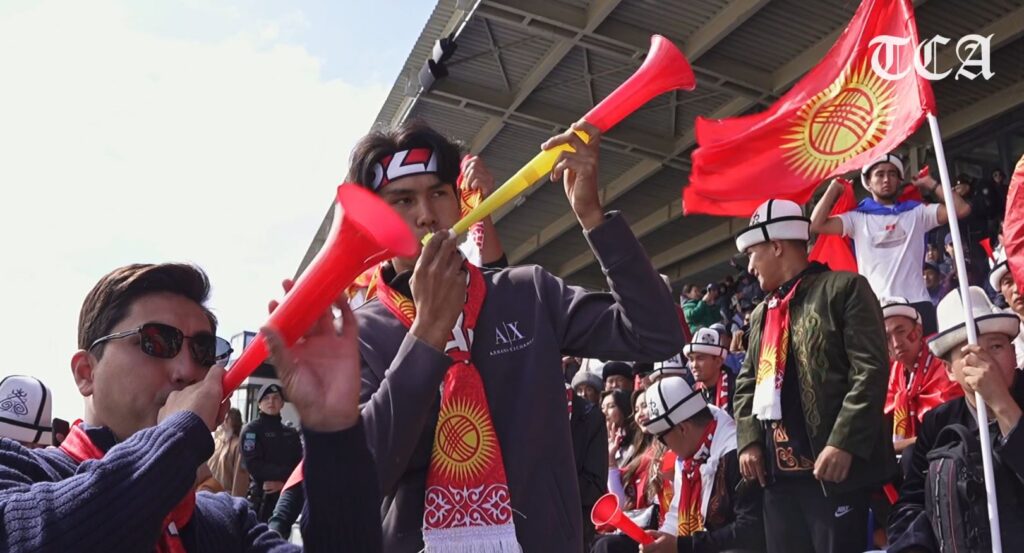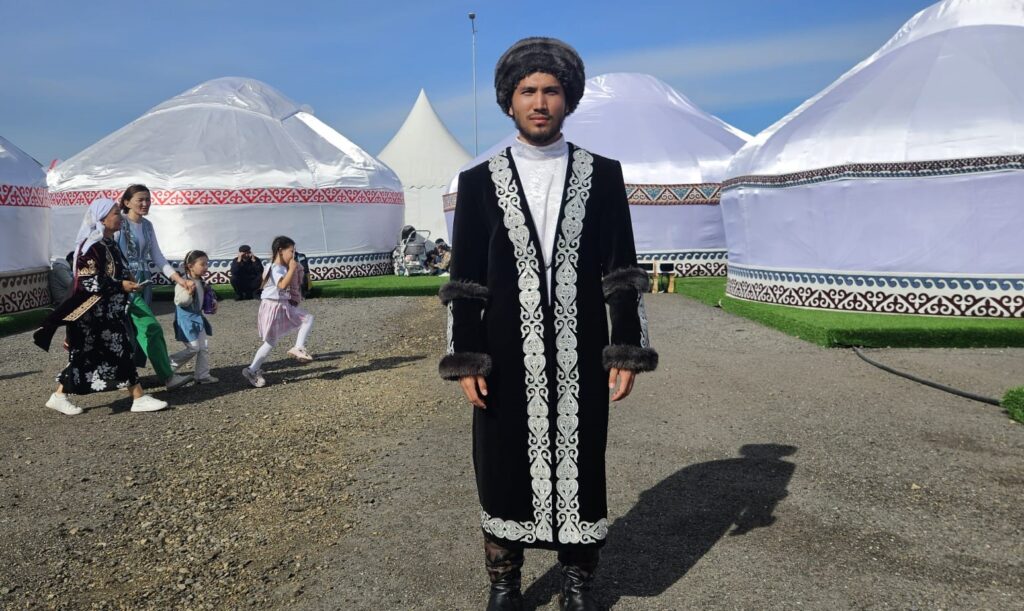The Kazanat Hippodrome, with a track length of 1,800 meters, and the Astana Grand Mosque — the biggest mosque in Central Asia — dominating the background, hosted the preliminary kokpar and kok boru games, known for their respective pursuits of a headless goat carcass, on day two of the World Nomad Games.
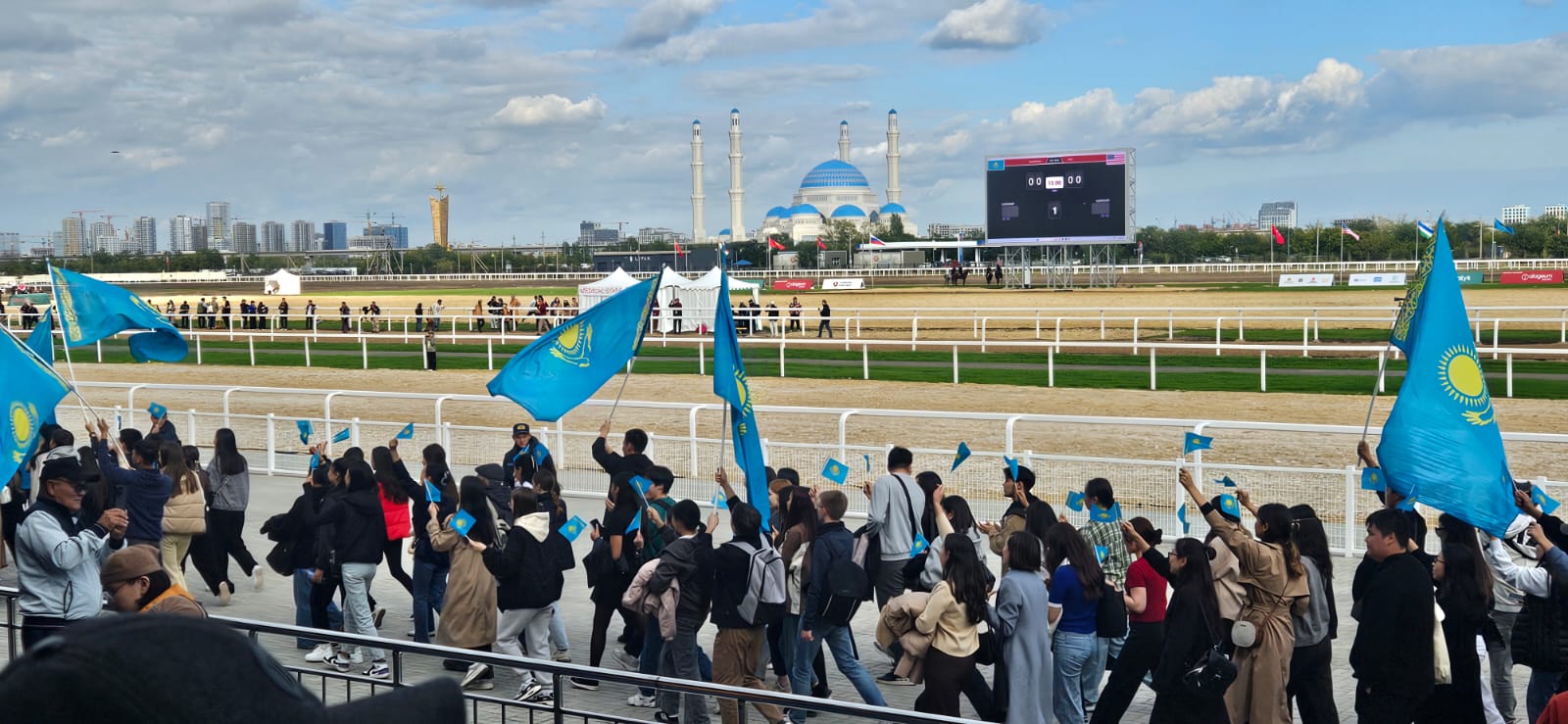
Image: TCA, K. Krombie
The layout of the Hippodrome track presents a great divide. The distance between the field and the spectators means that distinguishing the traditional headless goat carcass from the PC dummy version (serke) of the Games is an eye-squinting challenge if one doesn’t engage with the obligatory big screen. The two games, which appear to be very similar if not identical, are separated by cultural nomadic origins. Kokpar is Kazakh, while kok boru is from Kyrgyzstan. The Kyrgyz origins of kok boru (gray wolf) are rooted in an ancient post-wolf hunting tradition, where the carcass of the animal would be passed around — as in taken — among the hunters as a sporting activity while riding back to their village.
To the unacquainted spectator, kok boru (and kokpar) is where various other sports — equestrianism, polo, hockey, and football — merge in a rugged horseback chase and scrum. The aim of the game is to steer the goat carcass into the donut-shaped tai kazan — or goal — of the opposing team. Each team has twelve horses and players, while four players from each team play for three 20-minute spurts with 10-minute breaks in between. In those 20-minute periods, not a single minute is wasted.
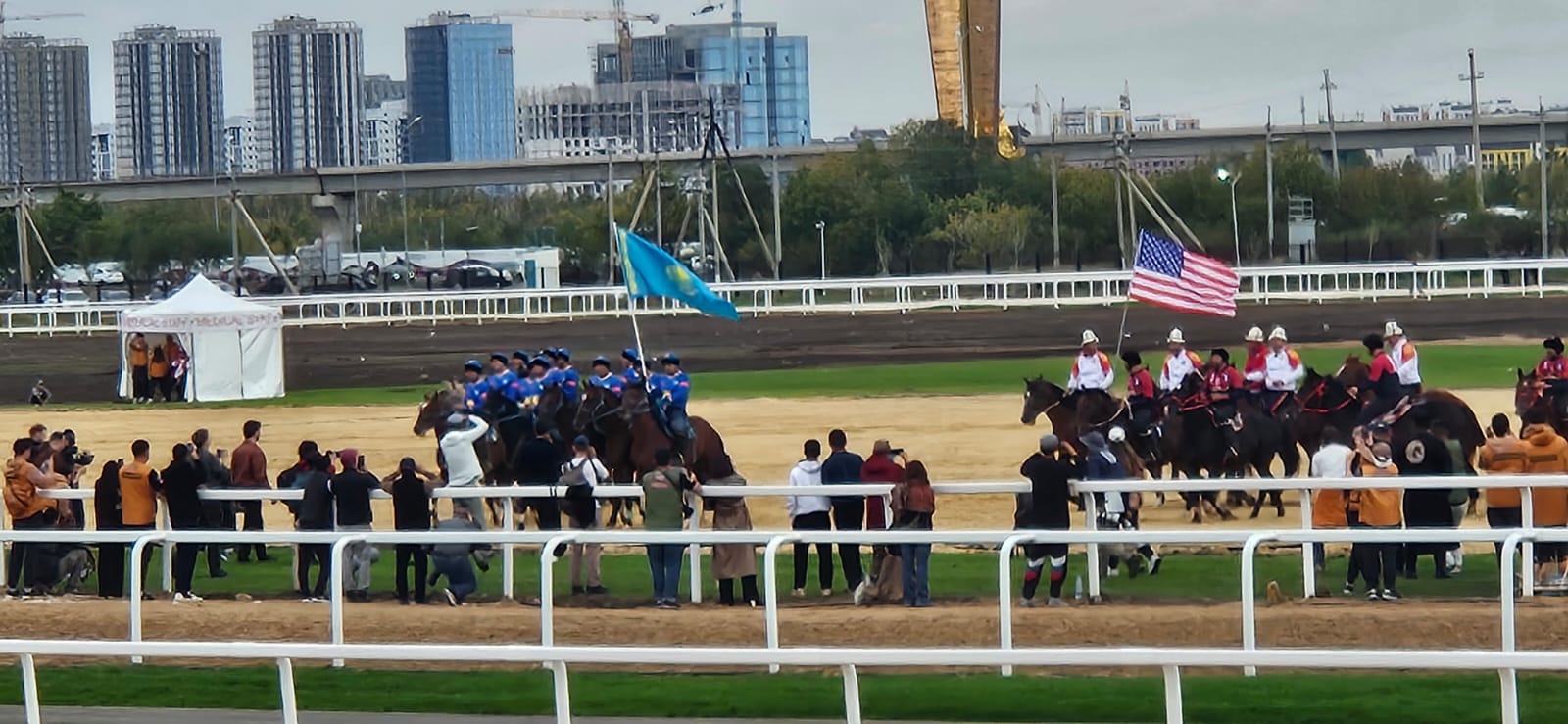
Image: TCA, K. Krombie
In the kok boru games, following Turkey’s 1 – 0 win with Hungary, the mostly home crowd reserved their audible enthusiasm for Kazakhstan versus the United States in a literal East versus West match (U.S. team player and MMA fighter Nick Willert is also a competitor in horseback wrestling at the neighboring Ethnoaul). Much fanfare accompanied a parade of marching, flag-waving Kazakhs ahead of the game.
From the off, the Kazakhs wiped the sandy floor with the American Cowboys. Almost every member of the Kazakh team scored points in quick succession, following taut human/horse throngs in the final stages of maneuvering the serke into the tai kazan. A general impression of the U.S. team was that they accepted their defeat with grace and humor, and were happy to be where they were. The same sentiment appeared to be shared by the Kazakh spectators, who are proud that these Central Asian games are gaining recognition on the international stage.
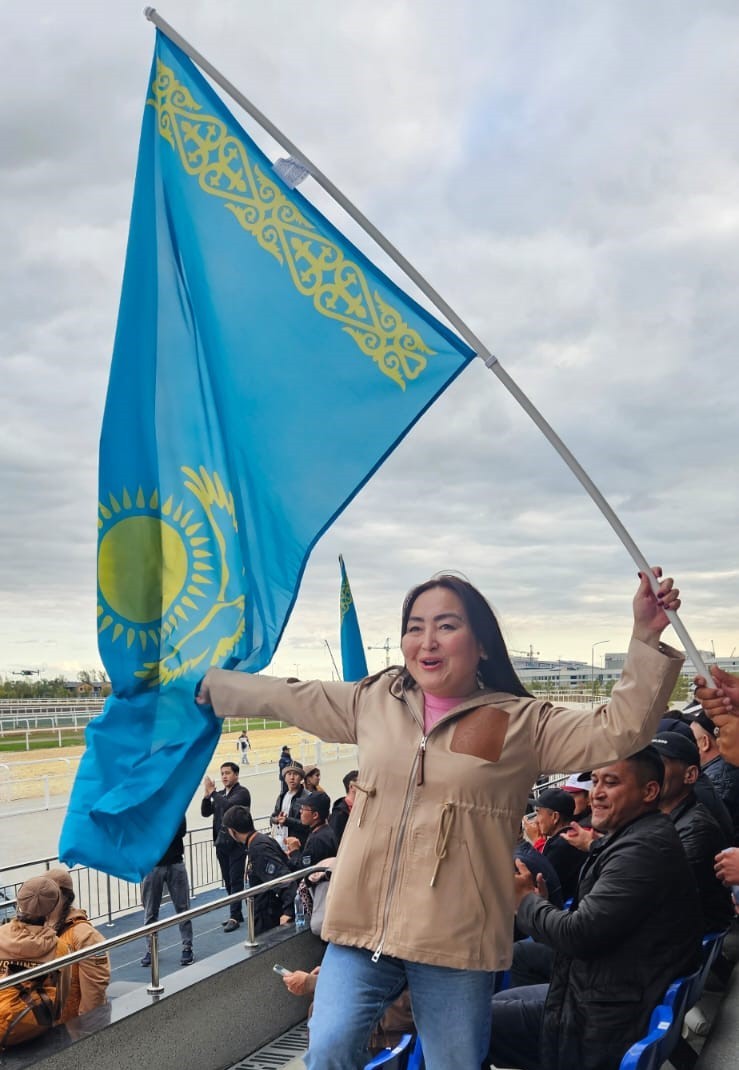
Image: TCA, K. Krombie
In the 2024 WNG, representation from the West is a growing trend for both the participants and the observers. American spectator Lisa Wagner, who was present at the kok boru games with friends and family specifically to support her fellow countrymen remarked that the Kyrgyzstan spectators in her midst were just as enthusiastic for the American team. Wagner said the U.S. team member who was “dragged off his horse” added to the “pretty interesting” overall spectacle. She cheerfully added that elements of the horseback wrestling at next door’s Ethnoaul looked like men “slapping each other.”
By the end of the final 20 minutes, unlike the raucous “Ka-zakh-stan” chant at the end of the second round, the energy from the mostly Kazakh crowd, on comfortable home turf, was one of calm assurance. With a score of 18 – 0 in their favor, it isn’t hard to see why.
